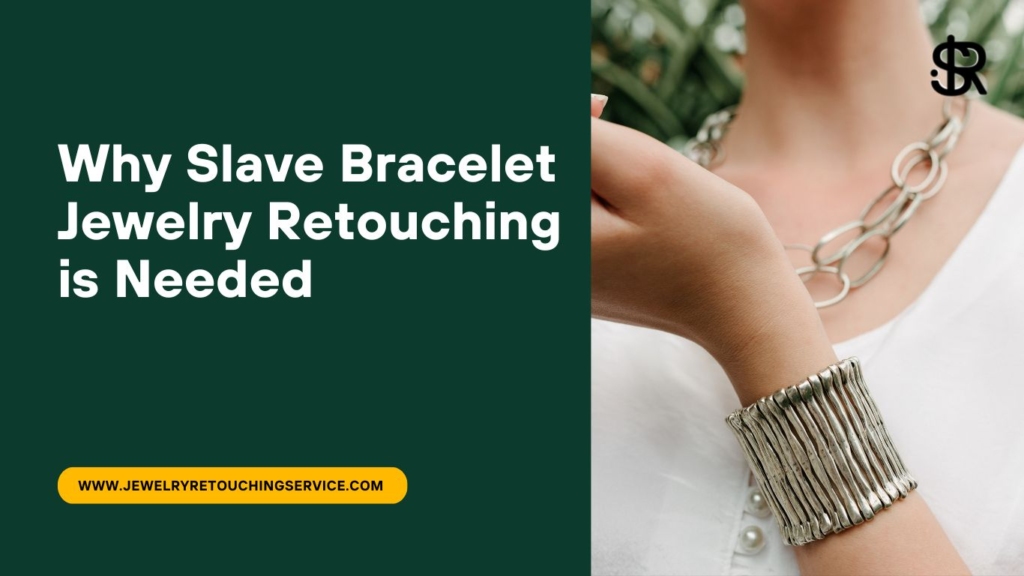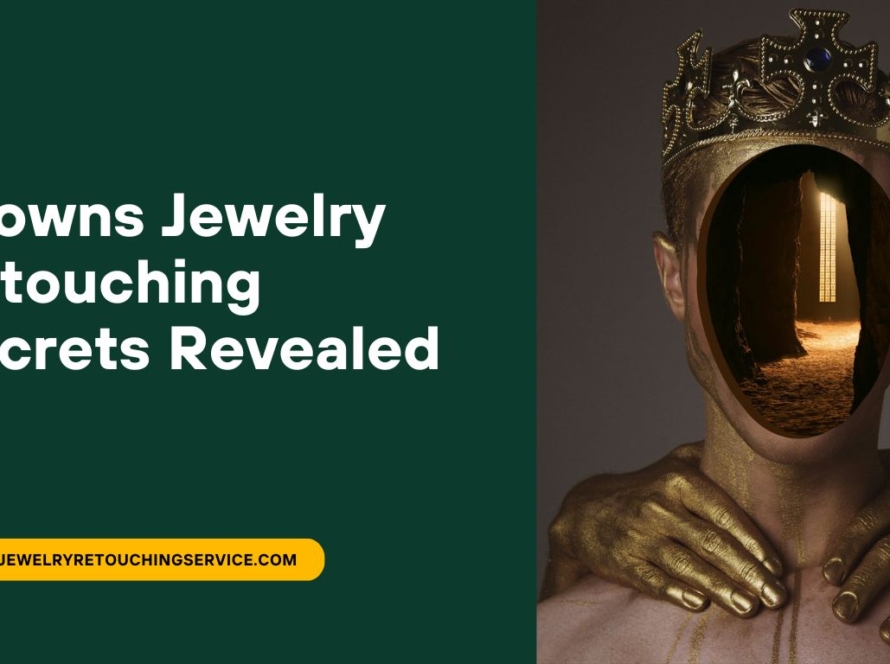Slave bracelet jewelry retouching is a process of enhancing or altering the appearance of slave bracelet jewelry in digital images. This involves removing unwanted marks, scratches, blemishes, and other imperfections on the jewelry to make it look more attractive and appealing. The retouching process can be done using various software and tools that help to enhance the details and texture of the jewelry. This type of retouching is widely used in fashion and beauty industries to showcase jewelry in the best possible way.

The History of Slave Bracelet Jewelry
Slave bracelets have a rich history dating back to ancient times when they were worn by women in different cultures to signify status and beauty. In recent times, slave bracelets have become popular fashion accessories, but their history is often overlooked. The history of slave bracelet jewelry is fascinating and varied, spanning many cultures and traditions. Understanding the history of slave bracelet jewelry can help in creating better retouching techniques that preserve the historical significance of these ornaments.

Why Slave Bracelet Jewelry Retouching is Needed
Is necessary because it can help to remove imperfections and enhance the beauty of the jewelry. In many cases, jewelry photography may have lighting or color issues that can be corrected with retouching. Retouching can also help to remove unwanted reflections, shadows, and other distractions that take away from the beauty of the jewelry. Additionally, retouching can help to standardize the color and tone of the jewelry, making it more consistent and attractive to potential buyers.

The Importance of Ethical Slave Bracelet Jewelry Retouching
Ethical slave bracelet jewelry retouching is essential because it involves preserving the originality and authenticity of the jewelry. Retouching should be done in a way that respects the cultural and historical significance of the jewelry, without altering or misrepresenting its true form. It is important to maintain transparency in retouching practices, including disclosing any changes made to the jewelry to avoid misrepresentation. Ethical retouching practices are essential in building trust with customers and maintaining the integrity of the jewelry.
Techniques for Slave Bracelet Jewelry Retouching
Can be done using various techniques and tools, including color correction, cloning, dodging and burning, sharpening, and other enhancement techniques. The use of these techniques depends on the specific requirements of the jewelry and the intended use of the images. Some techniques are used to remove imperfections, while others are used to enhance the details of the jewelry. The retouching process involves a series of steps that need to be followed carefully to achieve the desired results.
Common Problems in Slave Bracelet Jewelry Retouching
Can be challenging due to the intricate details of the jewelry and the different lighting conditions under which the photographs were taken. Common problems in slave bracelet jewelry retouching include color casts, reflections, shadows, dust, and scratches. These issues can be corrected using various techniques, but the retoucher needs to have a good understanding of the properties of the jewelry and the best ways to correct these issues.
Tips for Successful Slave Bracelet Jewelry Retouching
To achieve successful slave bracelet jewelry retouching, it is essential to understand the jewelry’s properties and the specific requirements of the retouching process. Some tips for successful retouching include using high-quality images, working with a clean and organized workspace, and following a structured workflow. Additionally, it is crucial to use ethical retouching practices that respect the jewelry’s cultural and historical significance.
Benefits of Slave Bracelet Jewelry Retouching
Offers several benefits, including enhancing the jewelry’s beauty, standardizing its appearance, and increasing its marketability. By retouching slave bracelet jewelry, the imperfections are removed, and the true beauty of the jewelry is brought out. Retouching can also help to standardize the jewelry’s appearance, ensuring that the color and tone are consistent across all images. This makes it easier for buyers to compare different jewelry pieces and make an informed purchase decision. Additionally, retouching can make jewelry more marketable, increasing the chances of a sale by making it more attractive to potential customers.
Case Studies of Slave Bracelet Jewelry Retouching
Case studies of slave bracelet jewelry retouching can provide valuable insights into the retouching process and the benefits it offers. One such case study involved retouching images of a vintage slave bracelet to bring out its true beauty and enhance its historical significance. The retouching process involved removing scratches, enhancing the color, and standardizing the jewelry’s appearance. Another case study involved retouching images of modern slave bracelets to make them more marketable. The retouching process involved removing reflections, standardizing the color and tone, and enhancing the details of the jewelry. These case studies illustrate the benefits of slave bracelet jewelry retouching and the importance of ethical retouching practices.
Conclusion
The Future of Slave Bracelet Jewelry Retouching The future of slave bracelet jewelry retouching is promising, with new technologies and tools emerging that can enhance the retouching process further. As the market for slave bracelet jewelry continues to grow, retouching will become more critical to make jewelry more attractive and marketable. However, it is essential to maintain ethical retouching practices that respect the cultural and historical significance of the jewelry. The retouching process should be transparent, with any changes made to the jewelry disclosed to maintain authenticity. In conclusion, slave bracelet jewelry retouching will continue to play a vital role in enhancing the beauty and marketability of slave bracelet jewelry while preserving its authenticity and historical significance.


